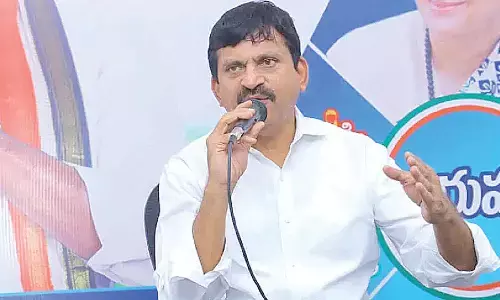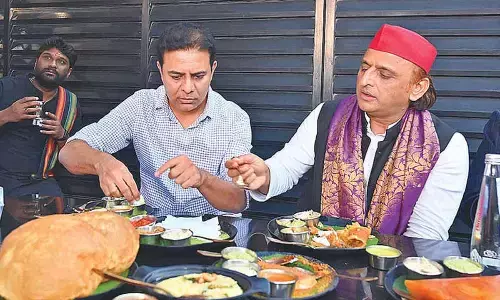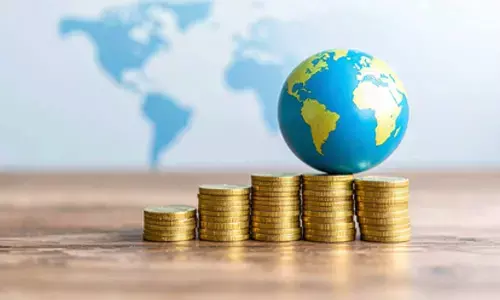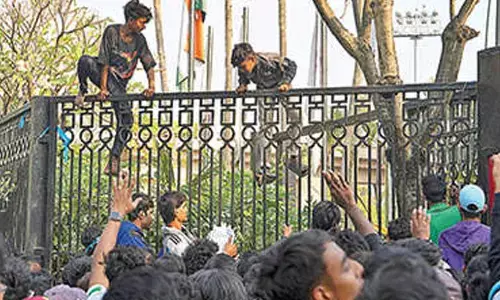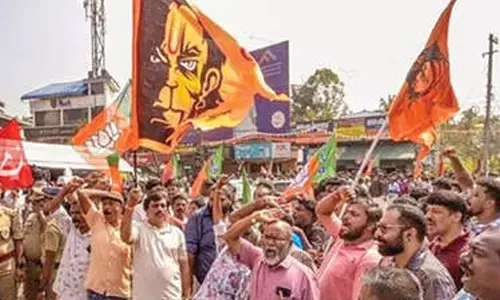Inclusivity not just moral imperative but economic necessity for shared prosperity
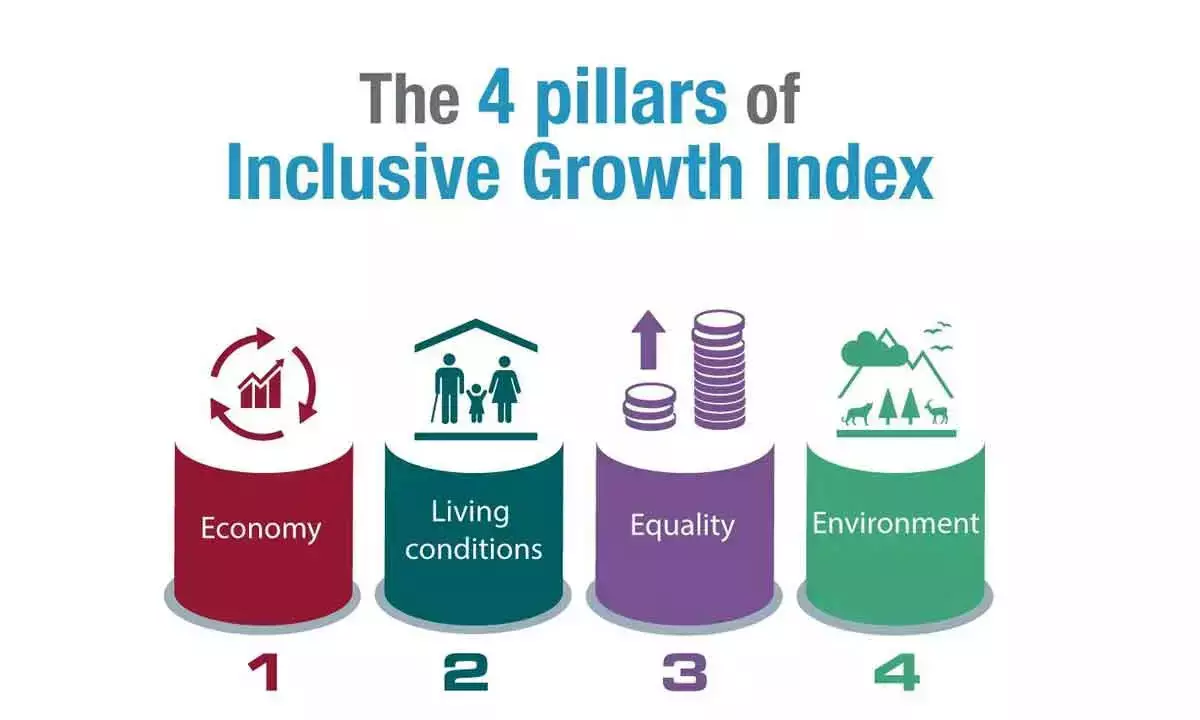
The relative per capita income in Telangana is now 193.6 per cent of the national average
Our States and Union Territories (UT) reflect diversity and socio-economic complexities of India as a nation. Each State and UT has its own cultural, social, economic and political identity and each is striving in their own unique way to develop an inclusive and equitable socio-economic order.
Only recently (September 18), the Economic Advisory Council of Prime Minister (EAC-PM) released a paper titled ‘Relative Economic Performance of Indian States: 1960-61 to 2023-24.’ A part of EAC-PM Working Paper Series, the paper (EAC-PM/WP/31/2024) has been written by SanjeevSanyal, member, EAC-PM, and AakankshaArora, Joint Director, EAC-PM. It has also been clarified that “the contents of the paper including facts and opinions expressed are the sole responsibility of the authors, and the EAC-PM or the Government of India do not endorse the accuracy of the facts, figures or opinions expressed therein.” The content of the paper is quite comprehensive but is devoid of the aura of our social realities and the struggles of almost every state and their impact on the economic performance. I could not find anything in the paper on how by depriving the majority of the people from weaker sections of society of opportunities and facilities to grow as human capital, an irreparable damage has been caused to the socio-economic fabric of various States in the country. Economy and economics cannot be detached from the social realities.
India, which has a long history of caste-based discrimination and demonization of the poor people on one pretext or the other, has paid a heavy price in terms of all-round inclusive development. Our states were never an exception, though many of them have a better track-record so far as social reforms and corrective measures are concerned. Since ours is a welfare state, we have to take into consideration the inclusivity of economic progress we make.
The paper says: “Before 1991, southern states did not show exceptional performance. However, since the economic liberalization of 1991, the southern states have emerged as the leading performers. In 2023-24, Karnataka, Andhra Pradesh, Telangana, Kerala and Tamil Nadu together accounted for approximately 30 percent of India’s GDP. In addition, the per capita income of all southern states became higher than the national average after 1991. For instance, the relative per capita income in Telangana is now 193.6 per cent of the national average, while Karnataka, Tamil Nadu, and Kerala have per capita incomes 181 per cent, 171 per cent, and 152.5 per cent of the national average, respectively.”
It is worth noting that socio-economic and political inclusivity in southern states has played a key role in driving their economic growth. They embraced diversity through inclusive policies, promoting equitable development across various communities. Andhra Pradesh and Telangana have focused on decentralized governance and rural empowerment, ensuring social schemes reach grassroots levels. Kerala, known for its high literacy rate and progressive social policies, has prioritized education, healthcare, and gender equality, creating a robust human capital base. Karnataka and Tamil Nadu, with their strong IT and manufacturing sectors, have implemented policies that encourage innovation and entrepreneurship while also promoting welfare schemes for marginalized communities. The blend of inclusivity, governance, and targeted socio-economic policies has underpinned their sustainable growth trajectories.
About the western states, the paper says that “Maharashtra and Gujarat have consistently performed well throughout the study period. Maharashtra has maintained the highest share of India’s GDP for almost all of the period. Gujarat’s share remained at broadly the same levels until 2000-01, before beginning to increase rapidly- from 6.4 per cent in 2000-01 to 8.1 per cent in 2022-23. Both Gujarat and Maharashtra have had per capita incomes exceeding the national average since the 1960s. Initially, Gujarat lagged behind Maharashtra, with a relative per capita income of 118.3 per cent compared to Maharashtra’s 133.7 per cent in 1960-61. This disparity persisted until 2010-11, when Gujarat surpassed Maharashtra. By 2023-24, Gujarat’s per capita income has risen to 160.7 per cent of national average, as compared to 150 per cent for Maharashtra.” The two states need to work a lot on the front of socio-economic inclusivity. Among the northern states, the paper says that Delhi and Haryana have performed notably well, while Punjab’s economy has deteriorated after 1991. Despite its small size, Delhi saw its share of India’s GDP increase from 1.4 per cent to 3.6 per cent during this period. Punjab and Haryana, which were once part of the same state, have experienced diverging economic trajectories. Punjab’s GDP share grew during the 1960s, mainly due to the Green Revolution, but then plateaued at around 4.3 per cent until 1990-91.
“West Bengal, which held the third-largest share of national GDP at 10.5 per cent in 1960-61, now accounts for only 5.6 per cent in 2023-24,” adds the paper. Punjab and West Bengal are a classic case of exclusionary governance in more ways than one. One needs to admit the fact that exclusionary governance policies perpetuated for decades in states like Rajasthan, Madhya Pradesh, Chhattisgarh, Bihar, Jharkhand, Odisha, Assam and Uttar Pradesh have severely hindered their inclusive development, leading to uneven growth that disproportionately affects marginalized communities. Policies, if shaped by political, social, and economic biases, limit access to essential services such as education, healthcare, and employment for disadvantaged groups including Dalits, Adivasis, and other backward classes. As a result, large sections of the population remain trapped in cycles of poverty and underdevelopment, while resources and opportunities are concentrated in the hands of more privileged communities. The lack of equitable distribution of government benefits exacerbates social disparities, stifling the region’s overall progress and deepening the marginalization of already vulnerable populations.
According to the EAC-PM paper, “in the 1960s, the undivided Uttar Pradesh was the largest economic powerhouse in the country, with a share of 14.4 percent in India’s GDP. However, its share started to decline thereafter, which continued even after bifurcation.” Let us note that a state or the country cannot achieve long-term economic success without embracing inclusivity as a core principle of its policies and governance. Inclusivity ensures that all segments of society, regardless of gender, ethnicity, socio-economic status, or geographical location, have equal access to opportunities and resources. It ensures a fair distribution of wealth, drives innovation through diverse perspectives, and reduces social tensions that arise from inequality.
Sustainable economic growth requires active participation of every citizen. If we don’t pursue inclusive policies rigorously, disparities will widen, and our economic potential will be stifled. Thus, inclusivity is not just a moral imperative but an economic necessity for lasting shared prosperity.








